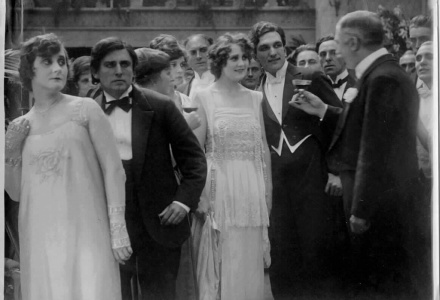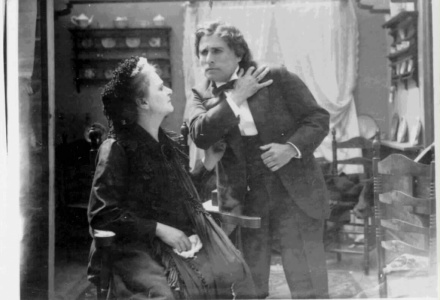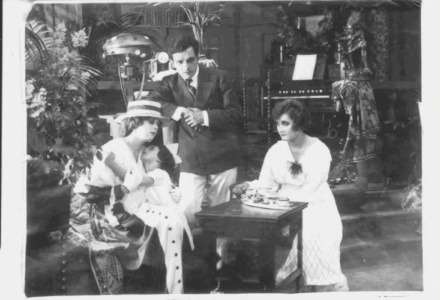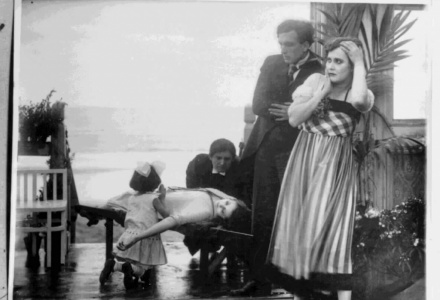Toen 't licht verdween
Summary
When the composer Pietro Cignoni meets Sylvia and Lyda, the daughters of barrister Gio Romano, he and Sylvia fall in love and eventually marry. Sylvia is unaware of how jealous her younger sister is. Even more jealous is the organist Rosni who for years has adored Sylvia in silence, not daring to ask her to marry him because he is a hunchback. Together Sylvia and Pietro enjoy five years of wedded bliss and are happy with their darling daughter, Renée. Then Sylvia notices that her eyesight is gradually failing and learns that only an operation can perhaps save her from total blindness. Alas, the operation is unsuccessful. While Sylvia is lying in hospital, Lyda takes over her sister's household duties, and her repressed love for Pietro awakes afresh. She does everything in her power to win Pietro away from his wife. Pietro struggles to deny his growing love for Lyda, but fears that he cannot continue to live with a woman who will always need his support. Rosni, still in love with Sylvia, sees what is happening and, egged on by his mother, tells Sylvia that her husband is not worthy of her. Sylvia makes a vain attempt to rewin Pietro's love by once again singing for him those songs that brought them together. She then makes the sad decision that she will sacrifice herself so as no longer to be a hindrance to Pietro and Lyda. From their house at the seaside, she walks over the beach into the sea and drowns.
Synopsis remarks: The character names given here are those used in the programme booklet issued by Cinema De Munt. In the synopsis given in an advertisement published by the distributor (‘De Bioscoop-Courant’, 11.10.1918) Gio Romano is called Mr van Haaften, Pietro is called Pieter Greve and Rosni becomes Robert.
Information
Images
Cast
Actor
-
Renée's nursemaid
-
Rosni's mother
-
Pietro Cignoni
-
Sylvia
-
Rosni
-
Lyda
-
Gio Romano
-
Professor
-
Renée
Crew
-
Director
-
Producer
Technical notations
Resources
G. Donaldson, Of Joy and Sorrow. A Filmography of Dutch Silent Fiction, Amsterdam (1997), p. 172
more information
If you are looking for more material from our collection, please contact Film Sales:
sales@eyefilm.nl
phone +31 (0)20 5891 426









